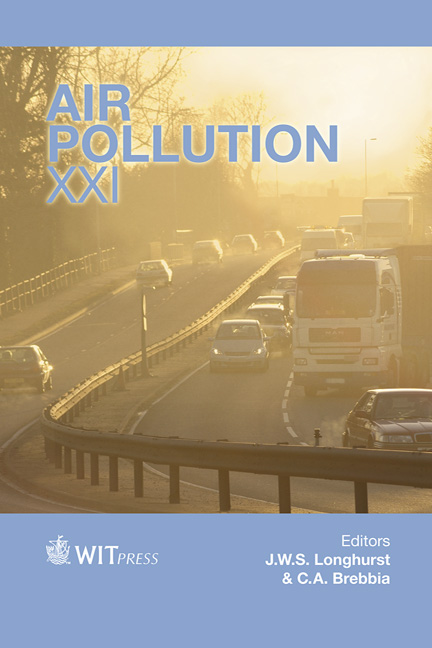Particle Formation In The Planetary Boundary Layer Over Tokyo And Its Suburban Areas
Price
Free (open access)
Transaction
Volume
174
Pages
12
Page Range
157 - 168
Published
2013
Size
1,748 kb
Paper DOI
10.2495/AIR130141
Copyright
WIT Press
Author(s)
H. Minoura
Abstract
The Japanese Ministry of the Environment promulgated the new air quality standard of PM2.5 in September, 2009, which is equal to the value of the air quality standards of the US EPA (yearly average 15μg m-3 and 24h average 35μg m-3). With the concentration of primary particles such as elemental carbon decreasing during the last decade, the contribution of secondary particles became a big concern. Observation using an aircraft is advantageous in that observation over the city sky does not receive local exhaust influence, is able to cover a wide range at a time, and is useful in understanding spatial character of the secondary particles. With the aircraft, a spatial variation of the particle size distribution (0.5– 10μm) of the coast line area and the inland area was measured nine times in three days from July 30, 2008 over the South Kanto region including the Tokyo metropolitan area. From the level flight observation at 600m altitude, the increased tendency of particle number concentration and the decreased tendency of mean particle diameter were observed as we flew to the north inland area. The number concentration and the relationship with the mean particle diameter showed the well-organized distribution. A volumetric change of more than 3 times was seen in the distribution of particles sampled in the inland area, whereas, a clear volumetric change was not seen in the distribution of particles sampled on the coast line. As for the number concentration of the particle, the mean particle diameter, and the particle volume, the value changed at the rate of 0.74cm-3 km-1, -0.48nm km-1, 0.057μm3 cm-3 km-1 each as a function of distance from the coast line. The increment tendency of the volume growth rates was seen in proportion to the NO2 concentration in particular. Keywords: Japan, Tokyo, spatial distribution, particulate matter, particle number concentration, secondary particle.
Keywords
Japan, Tokyo, spatial distribution, particulate matter, particle number concentration, secondary particle





